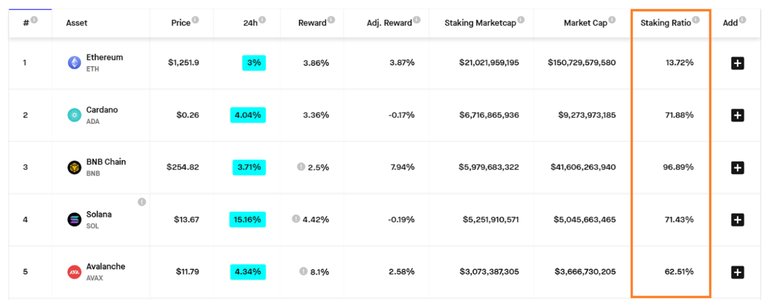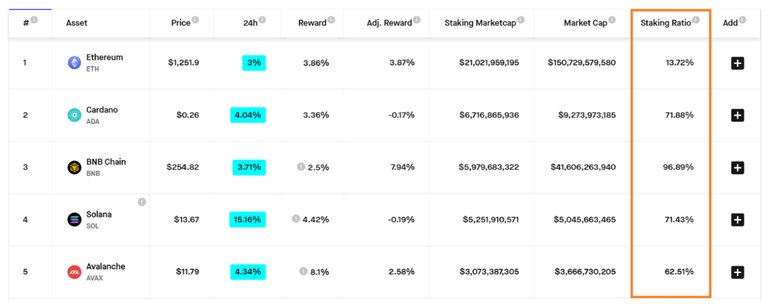THE RELEASE OF "SHANGHAI" IS NEAR (ENG/ESP)

Image downloaded from here.
The launch of the Hard Fork "Shanghai" is near.
The developers have created a shadow fork to test security and problems that may appear.
What is "shadow fork"?
They have basically used a copy of the current chain, and have implemented the Shanghai version in a test environment.
Right now they are trying to attack and checking for vulnerabilities.
But what's new in this version?
• "Shanghai" will finally make it possible to withdraw funds from Ethereum staking contracts, which are currently locked.
• "Shanghai" will significantly reduce the risk of staking ETH.
Currently, 13.18% of the total ETH supply is locked in the Beacon Chain, which is low compared to other proof-of-stake (PoS) chains like Cosmos Hub with a blocking ratio of 62.5%, Cardano with 71.8%, and Solana with 71.4%.
The reason for the low block ratio on the Ethereum network is that ETH tokens in their current state are inaccessible, but this will change in March.

What consequences can it have?
When the developers announced the unlocking of the ETH tokens locked after the Shanghai hard fork, experts suspected that staking would lose popularity in the community.
The whales and their activity are often considered key to an asset's price trend.
The whales in the ETH network increased their activity, “a strong rebound was observed with a 30% increase in large-volume transactions on the ETH blockchain” say some experts.
This trend could be offsetting the benefits to the ETH price of increased staking, which reduces the supply of available ETHs.
The bad news, "Shanghai" was initially going to include long-awaited updates such as proto-danksharding, a streamlined data sampling process that would make Layer 2 transactions on Ethereum substantially cheaper and faster. For time, the developers have decided to discard this function to be able to have everything ready in March.
Validators who want to withdraw their staking rewards must ensure that their withdrawal credentials are updated to the new standardized “0x01” format.
Currently, approximately 300,000 validators have yet to update their "0x00" credentials, while approximately 200,000 validators have already updated.
What do you think? Will it affect for better or for worse?
Español

Imagen descargada de aquí.
Se acerca el lanzamiento del Hard Fork "Shanghai".
Los desarrolladores han creado un shadow fork para probar la seguridad y los problemas que puedan aparecer.
¿Qué es el "shadow fork"?
Básicamente, han utilizado una copia de la cadena actual y han implementado la versión de Shanghai en un entorno de prueba. En este momento están tratando de atacar y buscando vulnerabilidades.
Pero, ¿qué hay de nuevo en esta versión?
• "Shanghai" finalmente permitirá retirar fondos de los contratos de participación de Ethereum, que actualmente están bloqueados.
• "Shanghai" reducirá significativamente el riesgo de apostar ETH.
Actualmente, el 13,18 % del suministro total de ETH está bloqueado en Beacon Chain, que es bajo en comparación con otras cadenas de prueba de participación (PoS) como Cosmos Hub con una tasa de bloqueo del 62,5 %, Cardano con 71,8 % y Solana con 71,4%. El motivo de la baja proporción de bloques en la red Ethereum es que los tokens ETH en su estado actual son inaccesibles, pero esto cambiará en marzo.

¿Qué consecuencias puede tener?
Cuando los desarrolladores anunciaron el desbloqueo de los tokens ETH bloqueados, los expertos sospecharon que el staking perdería popularidad en la comunidad. Las ballenas y su actividad a menudo se consideran clave para la tendencia del precio de un activo.
Las ballenas en la red ETH incrementaron su actividad, “se observó un fuerte repunte con un aumento del 30% en transacciones de gran volumen en la cadena de bloques ETH” dicen algunos expertos.
Esta tendencia podría estar compensando los beneficios para el precio de ETH de una mayor participación, lo que reduce la oferta de ETH disponibles.
La mala noticia, "Shanghái" inicialmente iba a incluir la actualizacion tan esperada llamada proto-danksharding, un proceso de muestreo de datos simplificado que haría que las transacciones de Capa 2 en Ethereum fueran sustancialmente más baratas y rápidas.
De momento, los desarrolladores han decidido descartar esta función para poder tenerlo todo listo en marzo.
Los validadores que deseen retirar sus recompensas de participación deben asegurarse de que sus credenciales de retiro estén actualizadas al nuevo formato estandarizado "0x01".
Actualmente, aproximadamente 300 000 validadores aún tienen que actualizar sus credenciales "0x00", mientras que aproximadamente 200 000 validadores ya se han actualizado.
¿Qué piensas? ¿Afectará para bien o para mal?
Yay! 🤗
Your content has been boosted with Ecency Points, by @p2eproject.
Use Ecency daily to boost your growth on platform!
Support Ecency
Vote for new Proposal
Delegate HP and earn more
Just Buy and HODL. :)
!PIZZA